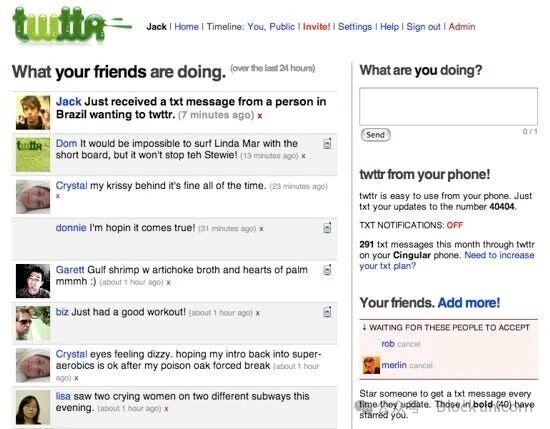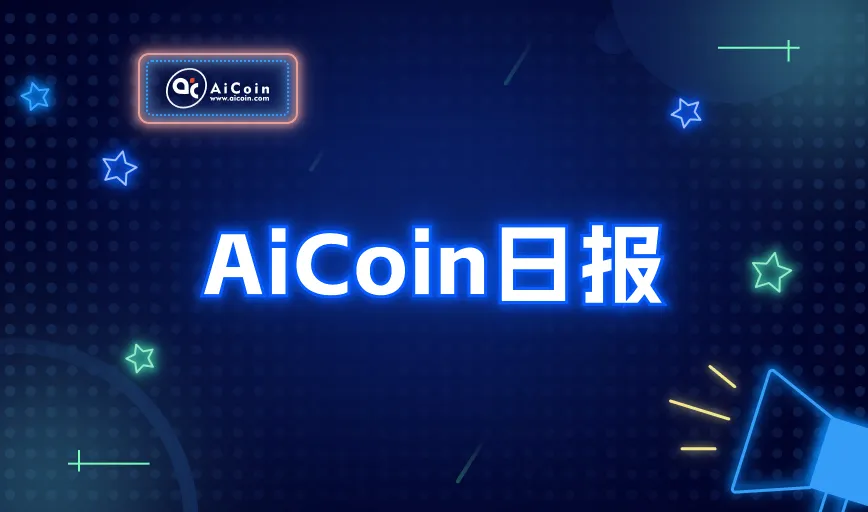Author: Thejaswini M A
Translation: Block unicorn
Preface
The conference room was silent. In October 2008, Jack Dorsey looked around the table at the members of Twitter's board, trying to find an ally, but there was none.
Evan Williams refused to make eye contact with him. The venture capitalists spoke in cautious tones about "operational challenges" and "management issues."
The platform frequently crashed. Employees complained about him leaving early for yoga classes. The board had lost confidence in him.
Fred Wilson announced the decision: they wanted new leadership. Williams would take over as CEO. Dorsey could remain as chairman, but his day-to-day control of Twitter was over.
He did not argue. At 31, he had never managed a company of this scale, and the pressure was suffocating. But as he walked out of the building that housed his creation, he felt a sting. The platform stemmed from his teenage obsession with scheduling communications. Now, that vision belonged to someone else.
Being fired from the company he founded taught him lessons that business school never covered. For Dorsey, this was just the beginning.
Getting a Job Through Hacking
Jack Patrick Dorsey grew up in a working-class Catholic family in Missouri. His father manufactured mass spectrometers, and his mother ran a café. As a young boy, Jack had a speech impediment and spent long periods indoors, where he was exposed to computers and communication systems.
Dorsey wrote scheduling software. Real-world taxi companies used his code to coordinate their fleets, solving practical problems for actual businesses.

His obsession was not accidental. Dorsey had realized the immense value of brief, frequent updates for coordinating complex systems. Emergency dispatchers do not waste time, as clear communication can save lives. What if the same efficiency could improve everyday communication?
At Bishop DuBourg High School, he worked part-time as a fashion model. After school, he would hack into systems, not to destroy them, but to understand how they worked.
A life-changing hacking incident occurred when he was 16. Dispatch Management Services had set up a website but did not list contact information. When Dorsey discovered a security flaw, he did not exploit it; instead, he emailed the company’s chairman, explaining the vulnerability and how to fix it.
Dorsey used this opportunity to start a conversation.
Chairman Greg Kidd decided to hire him within a week. A teenager from Missouri was now working for a logistics company in Manhattan, learning how to coordinate transportation and resources in real-time.
By the age of 14, the scheduling software he wrote was being used by taxi companies. At 18, he dropped out of New York University just one semester shy of graduation. He had too many ideas in his head to wait for the diploma to arrive.
What if people could send brief status updates to friends just like dispatchers update their locations and activities? What if everyone in the network could know each other's current activities without making phone calls or sending long emails?
A Global Platform Takes Off
In 2000, Dorsey moved to California and founded a company focused on scheduling couriers and emergency services over the web. This startup failed. For the next five years, he worked as a freelance programmer, refining his ideas while waiting for the right moment.
That moment came in 2006 when he joined the struggling podcast company Odeo. During a brainstorming session, Dorsey proposed his status update concept. He described it as a platform that combined the broadcasting characteristics of blogs with the immediacy of instant messaging.
Dorsey collaborated with Noah Glass and Biz Stone to create the first prototype of Twitter in two weeks. The name "twttr" followed the five-character SMS code format, inspired by Flickr.

On March 21, 2006, at 9:50 PM, Dorsey sent the first tweet: "just setting up my twttr."

These 24 characters changed the way millions of people communicated.
Twitter's breakthrough moment came at the South by Southwest (SXSW) music festival in 2007. Attendees used the service to coordinate parties and share real-time updates. During the festival, the daily tweet volume surged from 20,000 to 60,000. Dorsey's teenage intuition about status updates proved correct.
But success brought challenges he was unprepared to face. During his tenure as CEO from 2007 to 2008, Dorsey struggled to meet Twitter's operational demands. The service frequently crashed. Employees complained about his management style. Reports surfaced that he would leave early for yoga classes and fashion design courses.
The board lost patience.
October 2008 arrived like Judgment Day. They fired him from his own creation. Co-founder Evan Williams took over. Dorsey retained the title of chairman, but everyone knew the truth. The genius boy who conceived Twitter was deemed unfit to manage it.
The lesson was painful but also sobering. Dorsey could create products people loved, but he was not yet capable of building an organization that could scale.
He did not retreat; instead, he chose to transform.
His former boss, Jim McKelvey, recently lost a glass art deal because he could not accept credit card payments. Millions of small business owners, like McKelvey, felt immense frustration at being unable to access merchant services.
Their solution was a small, square device that plugged into a smartphone's headphone jack. Anyone could accept credit card payments anywhere. The first Square reader cost just $10, turning every phone into a point-of-sale system.
Square embodied the same philosophy as Twitter: removing barriers and democratizing access. If Twitter gave everyone a broadcasting platform, Square empowered every entrepreneur with payment processing capabilities that only large companies could afford.
The company officially launched in 2010.
This time, Dorsey learned from Twitter's lessons. He built a stronger operational system, hired experienced managers, and focused on sustainable growth rather than viral spread.
By 2015, Twitter was struggling under new leadership. User growth stagnated, and stock prices fell. Competitors like Facebook and Instagram attracted more attention.
The board asked Dorsey to return as CEO but imposed an unprecedented condition: he had to continue serving as CEO of Square. Critics questioned whether anyone could effectively manage two large public companies simultaneously.
He set up offices at both companies, scheduling his daily agenda down to the minute, relying on leadership teams to provide strategic direction.
This arrangement worked. Twitter stabilized, Square continued to grow, and went public in November 2015. Both companies benefited from Dorsey's design acumen and his ability to simplify and seek straightforward solutions.
The ousted CEO learned to become a leader.
Building the Currency of the Future
In the process of rebuilding his career, Dorsey discovered Bitcoin. This cryptocurrency embodied the principles he learned in scheduling systems: decentralization, peer-to-peer communication, and eliminating intermediaries.
"Bitcoin changes everything," he declared in 2018. If he were not managing Twitter and Square, he would dedicate himself full-time to Bitcoin.
He was not content with merely voicing support. In 2020, Square invested $50 million in Bitcoin, followed by an additional $170 million. Through Square's Cash App, he enabled millions who had never owned cryptocurrency to access Bitcoin.
Dorsey also founded Spiral, a department that funds open-source Bitcoin development. Unlike most profit-driven corporate crypto projects, Spiral's mission is altruistic: to improve Bitcoin's infrastructure for everyone.
However, as he resumed his role as Twitter's CEO, the platform faced increasing scrutiny. The 2016 election revealed how foreign entities used Twitter to spread misinformation. Congressional hearings and advertiser boycotts became commonplace.
After the 2020 election, challenges peaked. Twitter began labeling controversial tweets and ultimately suspended high-profile accounts, including President Trump’s, after the January 6 Capitol riot.
Dorsey defended these decisions, arguing they were necessary, but he also acknowledged their impact. "I believe this was the right decision for Twitter," he wrote regarding Trump's account suspension. "But I also think it’s important to examine the broader impact of this action on global public conversation."
This experience reinforced his growing belief: centralized platforms wield too much power. He began funding research into decentralized alternatives, including the Bluesky project supported by Twitter, which develops an open social media protocol.
On November 29, 2021, Dorsey resigned as Twitter's CEO for the second time. His resignation letter explained the reason: "I’ve decided to leave Twitter because I believe the company is ready to move on from its founders."
Unlike his first departure, this exit was voluntary and planned. He prepared his successor, Chief Technology Officer Parag Agrawal, and believed Twitter needed leadership unburdened by the founder's era.
Less than a year later, Elon Musk acquired Twitter for $44 billion and began implementing his vision. Dorsey retained a 2.4% stake but has made almost no public comments on these changes.
After leaving Twitter, Dorsey became an advocate for decentralization. He donated 14 Bitcoins to support Nostr, a decentralized social network protocol that does not require central servers or corporate control.
At Block, he doubled down on Bitcoin projects. The company developed 3-nanometer Bitcoin mining chips and launched Bitkey, a self-custody wallet designed for mainstream users. Block's mining hardware features a modular design with an expected lifespan of ten years, rather than the industry standard of 3 to 5 years.
Today, Dorsey stands at the intersection of technology and ideology. Through Block, he is building financial infrastructure for a post-traditional banking world. Through Bitcoin advocacy and Nostr funding, he is pushing for alternatives to existing internet platforms.
At the core of this is his belief that individuals should control their financial and digital lives. Bitcoin eliminates reliance on banks and governments. Nostr removes dependence on platform companies. Self-custody wallets eliminate reliance on exchanges.
These are all expressions of a political philosophy that values individual sovereignty over institutional control.
Dorsey remains focused on the future, just as he did when he dreamed of real-time city maps. His current projects reflect his belief that the most important internet infrastructure is still under construction.
The police scanner that initially inspired him continues to influence his thoughts on communication. The best information is concise, clear, and actionable.
They tell you where someone is and where they are going.
Everything else is noise.
Dorsey's achievements are not limited to Twitter or Block. He has demonstrated that complex systems can be simplified without losing functionality.
The scanner still crackles. He is still listening. He is still building maps of everything happening in real-time.
This concludes the introduction to Jack Dorsey. See you in the next article.
免责声明:本文章仅代表作者个人观点,不代表本平台的立场和观点。本文章仅供信息分享,不构成对任何人的任何投资建议。用户与作者之间的任何争议,与本平台无关。如网页中刊载的文章或图片涉及侵权,请提供相关的权利证明和身份证明发送邮件到support@aicoin.com,本平台相关工作人员将会进行核查。




